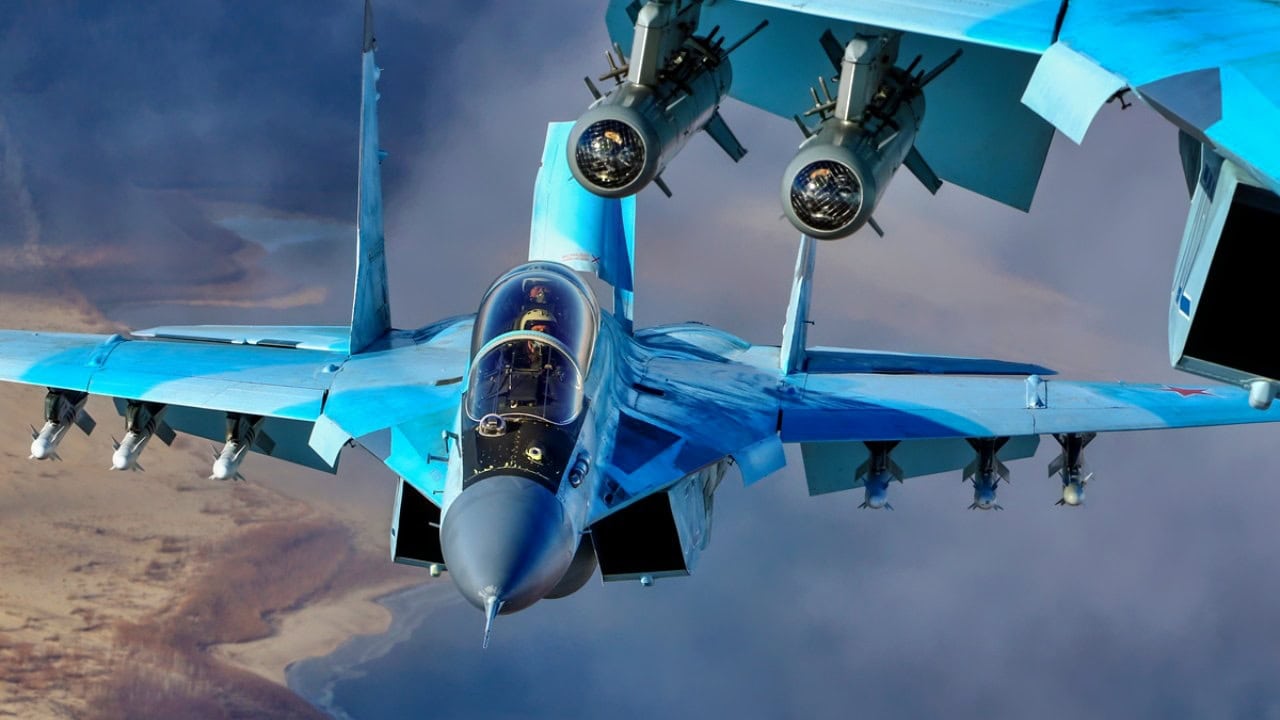Summary and Key Points: Russia’s MiG-35, an upgraded evolution of the MiG-29, offers advanced avionics, maneuverability, and an AESA radar system.
-Designed as an affordable multirole fighter, it bridges fourth- and fifth-generation capabilities but lacks stealth.
-Its air-to-air and ground-attack capabilities align with Russian combat doctrine emphasizing agility and pilot skill.
-However, its limited stealth and modern networked warfare integration pose challenges against advanced adversaries.
-Despite initial export hopes, interest in the MiG-35 has waned due to competition and Russia’s war in Ukraine.
-Low production numbers, minimal battlefield impact, and limited international appeal leave the MiG-35 facing an uncertain future in modern aerial warfare.
The MiG-35 Is Flying Into the Unknown
The MiG-35 represents Russia’s effort to modernize its multirole fighter fleet by leveraging the foundation of the earlier MiG-29.
Designed as a lightweight, highly maneuverable aircraft with advanced avionics and weapons systems, the MiG-35 aims to bridge the gap between fourth-generation fighters and cutting-edge fifth-generation platforms like the Su-57.
However, its reception in both domestic and export markets has been tepid, raising questions about its future in a crowded and competitive field of combat aircraft.
MiG-35 Fighter: A Step Up Over the MiG-29
In essence, the MiG-35 is a more advanced evolution of the MiG-29, its predecessor jet regarded for both its high degree of agility and its relatively low lifetime price tag compared to other fighter jets of a comparable age.
The MiG-35 incorporates several features, including advanced radar and upgraded electronic warfare, that give it an advantage over the MiG-29.
However, one of the platform’s more significant upgrades has been integrating an advanced active electronically scanned array (AESA) radar, allowing for better target tracking and longer engagement ranges.
Despite these upgrades, the MiG-35 is not a fifth-generation aircraft, as it lacks the features inherent to stealthy aircraft, opting to focus on affordability and significant though incremental upgrades rather than radar mitigation.
Air Superiority and Multirole Capabilities
The MiG-35 is a multirole platform capable of conducting both air-to-air combat and ground-attack missions.
Thanks to a high thrust-to-weight ratio and an advanced fly-by-wire system, the MiG-35 is highly maneuverable. The aircraft can deploy precision-guided munitions, anti-ship missiles, and air-to-ground rockets equipped with advanced targeting pods, providing versatility across mission profiles.
The aircraft’s air superiority capabilities align with traditional Russian air doctrine, which prioritizes a superior dogfighting capability over dedicated stealth features and emphasizes pilot reflexes and skills over technological overmatch.
Challenges in Combat Scenarios for MiG-35
The MiG-35’s design philosophy faces challenges in modern warfare, particularly against adversaries equipped with advanced stealth aircraft and integrated air defense systems.
While its AESA radar and electronic warfare systems offer competitive features, the MiG-35 lacks newer fifth-generation platforms‘ low observability and advanced networked capabilities.
The jet’s very limited production numbers and relatively small deployment history have been a challenge. Though the plane has reportedly been deployed to Ukraine in some, presumably tiny, numbers, the jet’s impact on that conflict has been minimal.
Further complicating matters is the jet’s lack of stealth features — and indeed, virtually all of the Russian air fleet — which has prevented, in part, Russia from achieving wider air superiority in the face of a concerted Ukrainian air defense effort by Ukraine with the aid of Western-supplied weaponry.
MiG-35 Struggles
Before Russia’s full-scale invasion of Ukraine, it is presumed that Russia had hoped to make inroads into countries eager to import the jet, and in particular, countries that had historically had defense ties to the Soviet Union or Russia to varying degrees.
Egypt, Vietnam, and several other countries were seen as potential future MiG-35 operators. Ultimately, the deals with these countries fell through due to better deals from other countries and their fighters, principally from Europe or China.
Another complicating factor for the jet’s export has been the war in Ukraine, which has consumed Russian weapons, platforms, ammunition, men, and materiel at a breakneck pace and severely curtailed the ability of Russian firms to fill signed export contracts, let alone seek new agreements with other international partners.
Consequently, MiG-35 production numbers remain pretty low. With future aircraft likely to emphasize radar-mitigating stealth features, the future of the MiG-35 is uncertain.
About the Author: Caleb Larson
Caleb Larson is an American multiformat journalist based in Berlin, Germany. His work covers the intersection of conflict and society, focusing on American foreign policy and European security. He has reported from Germany, Russia, and the United States. Most recently, he covered the war in Ukraine, reporting extensively on the war’s shifting battle lines from Donbas and writing on the war’s civilian and humanitarian toll. Previously, he worked as a Defense Reporter for POLITICO Europe. You can follow his latest work on X.

